

Comma Worksheet - Paragraphs Worksheets. Interactive Word Study Review Games - Mrs. Kinsey's Classroom Connections. You Are Your Words - AHD. Phonics games. Phonics games will help your child to practise sounding out words, which will help them to read.
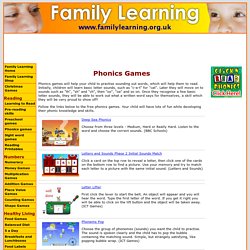
Initially, children will learn basic letter sounds, such as "c-a-t" for "cat". Later they will move on to sounds such as "th", "sh" and "ch", then "oo", "oa" and so on. Once they recognise a few basic letter sounds, they will be able to work out what a written word says for themselves, a skill which they will be very proud to show off! Follow the links below to the free phonics games. Your child will have lots of fun while developing their phonic knowledge and skills. Jolly Phonics Songs in ORDER! (Letters and Sounds) อนุบาล British Early Years Centre.mov. Starfall's Learn to Read with phonics. Welcome Nicole Lyons - ABC Reading Eggs. Writer's Workshop Resources and Ideas.
The majority of time of Writing Workshop is devoted to independent writing.

During this time, students are prewriting, drafting, revising, editing, and publishing their pieces. Depending on the age and abilities of your students, independent writing can be as short as 15 minutes or as long as 45-60 minutes. It helps to build stamina with your class, beginning with a short amount of time and building that time until they can work for up 30 minutes or more.
Home. English - Knowledge of Language. 10000+ online newspapers in the world, translate with one click. Story Starters. BloomsTaxonomyActivitiesTabs.swf (application/x-shockwave-flash Object) Woodlands Literacy Zone - Interactive English Games - Primary Pad · Superfunky Collaborative Writing For Schools. Online Etymology Dictionary. Our Cool School: Persuasive Writing: OREO....updated with PDF files. Words Their Way. Words Their Way. Photo of the Day – Powerhouse Museum. April 11th, 2014 by Lynne McNairn This image shows the workings of the busy docks in Darling Harbour in around the 1890s.
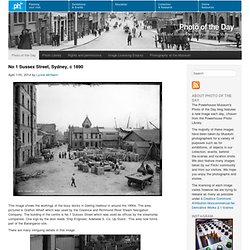
The area pictured is Grafton Wharf which was used by the Clarence and Richmond River Steam Navigation Company. The building in the centre is No 1 Sussex Street which was used as offices by the steamship companies. One sign by the door reads ‘Ship Engineer, Adelaide S. Co, Up Stairs’. There are many intriguing details in this image. Detail 1: Horses and men wait patiently to pick up or deliver their loads. Detail 2: Barrels and crates wait to be loaded. Detail 3: Two young women walk across the cobblestones. Ziptales. Student Interactives.
Creating. Literacy Resources. I Keep a Writer's Notebook alongside my Students. Do you? I began requiring journal writing way back in 1990--my first year of teaching.
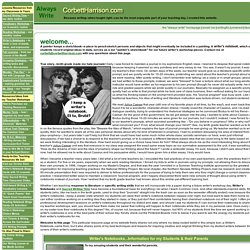
I had taken a methods class at my university that stressed the importance of having students keep journals to record daily responses to topics. I said, "Why not? " and every student from day one maintained a spiral-bound "journal" for me. Most students tossed their journals in the trash on the last day of class in June; they could have cared less about the responses they'd scribbled in there, and I knew they didn't care about their journals, yet I continued to use this daily practice for those first five or so years of teaching. To be perfectly honest, journal-writing was ten or fifteen minutes of daily "busy work" that allowed me to take care of attendance and set up the classroom's lesson for the day while the kids were quiet.
In the spring of 1998, thanks to my high school journalism students' hard work, I was awarded with a month-long, summer fellowship from I have to be doing something right. Writing Objectives Using Bloom's Taxonomy. Various researchers have summarized how to use Bloom’s Taxonomy.
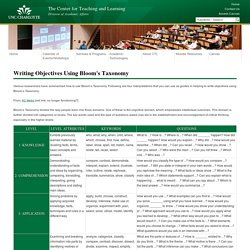
Following are four interpretations that you can use as guides in helping to write objectives using Bloom’s Taxonomy. From: KC Metro [old link, no longer functioning?] Bloom’s Taxonomy divides the way people learn into three domains. One of these is the cognitive domain, which emphasizes intellectual outcomes. This domain is further divided into categories or levels. From: UMUC From: Stewards.
Read it! Loved it! Raps and Book Raps Home Page. Current & planned raps Join a reading adventure!

A rap supporting reading and literacy, this offers a range of exciting reading ideas, activities for K-10, resources and ebooks to dip into, and a space for you to share your reading adventures. This rap and gallery remain available throughout 2013. Drop in any time to use the resources and activities. Term 1, 2013 All about me, all about you is a 5 week rap, commencing on Monday February 25, supporting autobiographical writing in Stage 3 and 4 English. Raft, river, rainbow fiction blog is a 5 week rap, commencing on Monday February 25, supporting narrative writing in Stage 3 and 4 English. Term 2, 2013. Book empire-books supporting C2C. Challenge booklists - Books - Reading Challenge. <div class='noindex'>You may be trying to access this site from a secured browser on the server.
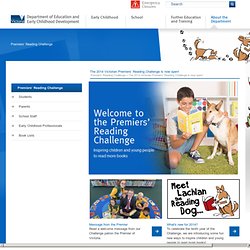
Please enable scripts and reload this page. </div> Turn on more accessible mode Skip Ribbon Commands. "Outside of a dog, a book is a man's best friend. Inside a dog, it's too dark to read." - Groucho Marx.